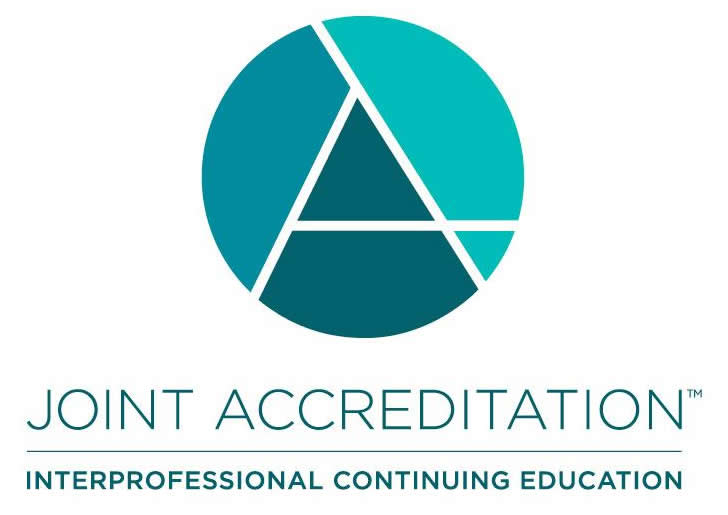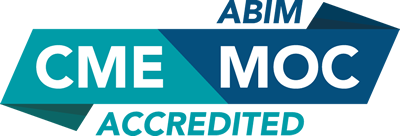
COURSE CREDITS & HOURS
21 AMA PRA Category 1 Credit(s)™21 ACPE Credits
21.0 Contact Hours
21 (part II) MOC points in medical knowledge in the American Board of Internal Medicine's (ABIM) Maintenance of Certification (MOC) program
COURSE FEES
TARGET AUDIENCE
PROGRAM PURPOSE
We will cover evidence based information on the ideal diet for patient with coronary artery disease and those at risk. We will discuss the epidemic of obesity and the effect of the cardiometabolic syndrome on the cardiovascular system.
We will delivery a comprehensive and evidence-based lecture on the management of congestive heart failure. We will provide the clinician with the newest information on the evaluation and management of hypertension and on the new class of drugs for the treatment of hypercholesterolemia-PCSK9 inhibitors.
We will explore issues and treatment strategies for patients who could benefit from statins but who are intolerant of these medications. We address a very common issue for midldle-aged men, erectile dysfunction. We will discuss prevalence, mechanisms and potential therapies for ED. We will present new recommendations for patients who require antiplatelet and anticoagulation therapy for cardiovascular conditions.
We will explore Point of Care Ultrasound (POCUS) a new technology that will potentially expand and enhance the physical exam. Finally we will review evidence based guidelines for the pre-operative evaluation of adult patients with and without cardiovascular disease.
As medical and pharmaceutical breakthroughs are frequent in today's society, primary care providers must call upon the evidence-based knowledge and talents of a variety of allied healthcare professionals to effectively meet the complex needs of their patients.
For a perimenopausal woman, her medical provider may call her pharmacist to determine if there is a less costly yet equally effective hormonal preparation for her vasomotor symptoms. Additionally he or she may inquire about compounding for atrophic vaginitis, vulvodynia and chronic Candida vulvovaginitis.
Beyond conferring with a gynecologist and other specialists, the primary care provider must network with a physical therapist for patients with pelvic organ prolapse and levator myalgia.
Patient-specific and dynamic communication among nutritionists, psychologists, team physicians and exercise physiologists is essential to the diagnosis and treatment of the female patient with amenorrhea with the Female Athlete Triad or an Eating Disorder.
Equally important as a gynecologist identifying a patient with PCOS and the provider managing her hyperinsulinemia and hyperlipidemia is the dietician who directs her weight loss.
The health department nurse providing the HPV vaccine to a 13-year old girl benefits the teenager with more protection from future cervical, oropharyngeal, anal cancer than Pap smears alone performed by a womens healthcare specialist.
Topics ol>
- Describe the pathophysiology of the cardiometabolic syndrome
- Describe the evidence supporting the beneficial effects of the Mediterranean diet
- Outline the major changes in the new AHA/ACC guidelines regarding the treatment of hypertension
- Explain the prevalence and the pathophysiology of erectile dysfunction.
- Describe three treatment strategies for ED
- Describe the prevalence of statin intolerance
- Describe three treatment strategies for statin intolerance
- Explain the pharmacologic mechanism of PCSK9 inhibitors in the treatment of hypercholesterolemia
- Explain the risk stratification for patients anticipating noncardiac surgery
- Describe a comprehensive and evidence-based approach to the medical management of congestive heart failure
- Explain new strategies for the CV use of antiplatelet and anticoagulation therapy
- Describe new uses of POCUS in clinical practice
- The healthcare provider will recognize the development of modern day cervical cancer screening, the role of high risk HPV in male and female lower genital tract, oropharyngeal, anal carcinogenesis, and the importance of promoting HPV vaccination. Additionally the attendee will be able to properly manage the patient with abnormal cervical cancer screening testing according to the 2019 ASCCP Guidelines.
To Treat or Not To Treat with Estrogen
- The clinician will address the concerns of perimenopausal women including their complaints of mood disturbance, vasomotor symptoms, insomnia, diminished sexual desire, vaginal atrophy. He/She will offer patients a variety of behavioral, hormonal, nonhormonal therapeutic modalities during this perimenopausal window.
- The provider will describe the new model of ovarian carcinogenesis and the obstacles encountered in trying to develop ovarian cancer screening. The participant will assess the malignant potential of a palpable mass in a woman using present day imaging and ovarian tumor markers and direct appropriate conservative, medical, or surgical intervention. Additionally, the attendee will identify, counsel and if indicated refer women who are at risk of hereditary predisposition to ovarian cancer for genetic testing.
- Participants will generate a differential diagnosis for females of various reproductive ages presenting with signs of hyperandrogenism and order appropriate laboratory, radiologic imaging and timely referral to an endocrinologist, gynecologic oncologist, or general surgeon.
- Upon completion of this didactic activity, the attendee will identify patients with PCOS, initiate recommended metabolic screening endorsed by the 2013 Endocrine Society and employ treatment for signs of hyperandrogenism. The participant will also prescribe risk reducing behavioral and pharmacotherapeutic measures for long term sequela of this disorder.
- The participant will give examples of the variety of infectious, inflammatory, neoplastic, and neurologic disorders that cause vulvar burning/ pruritus, and make timely decisions on proper treatment and need for biopsy.
- The participant will draw from historical and physical exam findings, culture and new quantitative PCR based assays to properly detect and treat a variety of recurrent infectious and non-infectious causes of vaginal irritative symptoms.
- Attendees will adopt the PALM-COEIN classification system in defining the etiology of abnormal uterine bleeding in a nonpregnant woman of reproductive age. Additionally, participants will be able to select the most appropriate and cost effective imaging studies to confirm a specific disorder and direct endometrial biopsy based on patient specific risk factors.
- The provider will recognize the potential role of new GnRH receptor antagonists, selective progesterone receptor modulators and the levonorgestrel-IUD in treating AUB-L
- Having acquired an understanding of fibroid tumorigenesis, the health care provider will select from a variety of pharmacotherapeutic agents among them continuous GnRH agonists, GnRH antagonists, SERM's, SPRM's, Aromatase Inhibitors, Tranexamic acid, Levonorgestrel IUD, as well Interventional Radiological Interventions to best meet the individual needs of his/her patient.
- The attendee will openly discuss problems of a sexual nature with his/her patients, define the type of sexual dysfunction and offer behavioral, pharmacologic therapy or referral to sex therapist





























